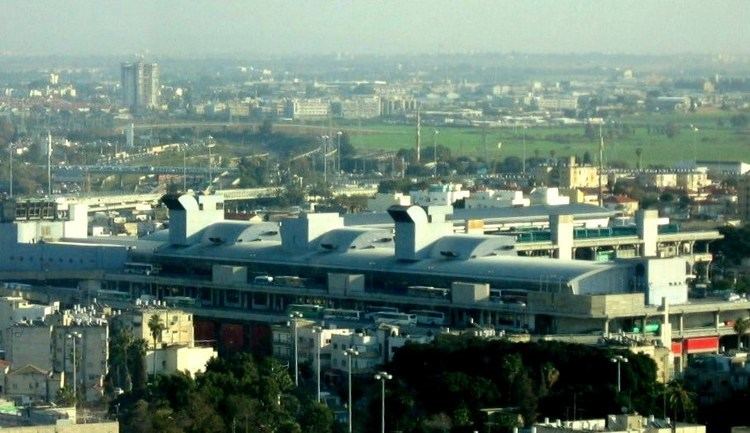Address Tel Aviv-Yafo, Israel | ||
 | ||
Similar Old Tel Aviv Central B, Jerusalem Central Bus Station, Tel Aviv HaHagana Railway, Tel Aviv Savidor Central R, Azrieli Center | ||
Tel Aviv Central Bus Station, known as the New Central Bus Station (התחנה המרכזית החדשה, HaTaħaná HaMerkazít HaĦadašá), is the main bus station of Tel Aviv, Israel. Located in the south of the city, it was opened on August 18, 1993. It is the largest bus station in the world from its opening date. The station covers 230,000 m2 and a total area of 44,000 m2 (44 dunams).
Contents
A portrait of tel aviv central bus station
History
Construction began on December 14, 1967, but work was prematurely halted due to financial difficulties. The building was finally inaugurated on August 18, 1993. The inauguration ceremony was attended by Prime Minister Yitzhak Rabin and the mayor of Tel Aviv Shlomo Lahat. The station's prolonged construction period gave it the title of white elephant among the public, and in light of this, the inauguration ceremony included releasing a white elephant balloon into the sky.
The station, which was designed by Ram Karmi (1967) and completed (1993) by the architects Yael Rothshild, and Moti Bodek, opened with six floors, and the initial plan called for buses to travel to all six. In practice, only four of the six floors were used as bus terminals, and in 1998 the first- and second-floor platforms were transferred to the newly opened 7th floor. This act killed off the remaining businesses on the first two floors and hurt businesses on the third.
On January 5, 2003, 23 people were killed and over 100 injured when two suicide bombers detonated at the station. The Al-Aqsa Martyrs Brigades claimed responsibility for the attack.
In January 2012, the owners of the station filed for its bankruptcy.
Specifications
The complex includes a shopping mall serviced by 29 escalators and 13 elevators with over 1,000 shops and restaurants. Only three of the seven floors are used as a bus terminal. The main entrances are on the north and east sides of 4th floor. Most intercity buses leave from a departure hall on the north (main) wing on 6th floor. On the 7th floor, which was an addition to the original building, there is a departure hall for local buses (to destinations within Gush Dan) on the north wing, and another departure hall for intercity buses (to destination in the Galilee) on the south wing. The wings of this level are completely separated.
The station serves Egged, Veolia (formerly Connex), Superbus, Metropoline, Afikim and Nateev Express intercity bus routes as well as local Dan, Egged and Kavim city and suburban buses. In 2008, approximately 100,000 people visited the station building every day.
It covers 230,000 m2 and a total area of 44 dunams (44,000 m2).
Tel Aviv Central Bus Station is located near Tel Aviv HaHagana Railway Station, but there is no direct link between them.
Problems and criticism
The Tel Aviv Central Bus Station has suffered from some neglect and disrepair. As the station is located in the poorest part of the city, numerous drug addicts, prostitutes and homeless people take residence there on occasion. In 2010, there was a murder and three cases of rape in the station.
The station has also been criticized for its complicated design which makes it hard to get around, and for being built in a neighborhood that didn't fit its character.
